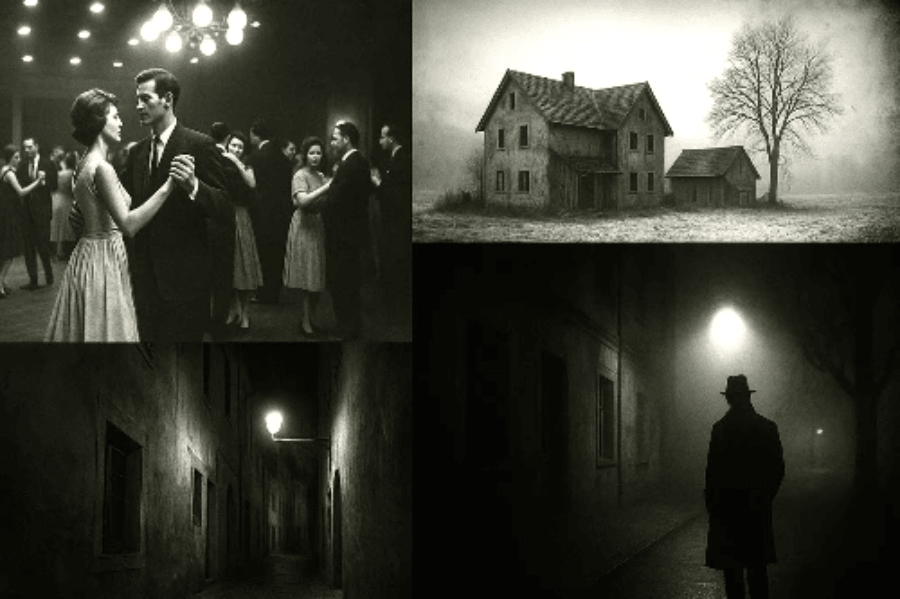
Infamous murderers who were never caught
Some of the world’s most chilling murder mysteries remain unsolved, their perpetrators vanishing without a trace and leaving behind only fear, speculation, and unanswered questions. From the Monster of Florence serial killings in Italy to the eerie Hinterkaifeck farmhouse murders in Germany, these cases continue to baffle investigators and fascinate true crime enthusiasts decades later. In this article, we explore ten infamous killers who were never caught - stories of brutality, mystery, and the terrifying possibility that some of these killers may still walk among us.
1. MONSTER OF FLORENCE — ITALY (1968–1985)
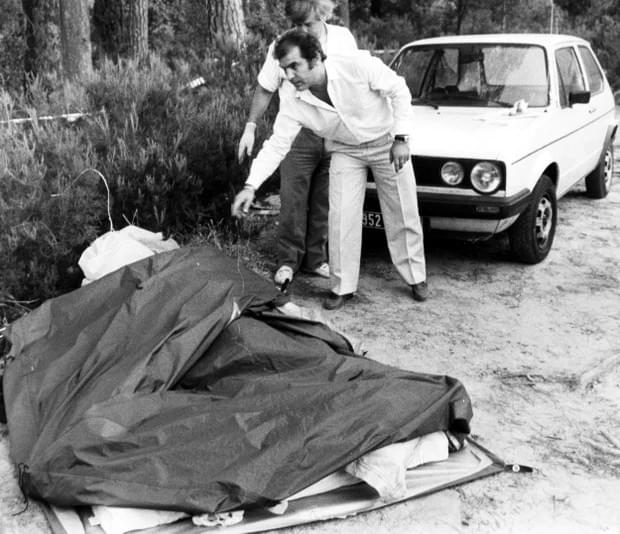
A man covers with a tent the lifeless body Nadine Mauriot, of France, killed along with her boyfriend Jean Michel Kravcicvili in San Casciano Val di Pesa, Italy, in this Sept. 9, 1985 file photo. AP Photo/Torrini
Between 1968 and 1985, a shadowy killer stalked the Tuscan hills near Florence, targeting young couples who sought privacy in parked cars. At least 14 people were killed in eight separate double homicides. Victims were typically shot with a .22 caliber Beretta pistol, and in several cases, the female victims were mutilated post-mortem. The brutality shocked Italy and sparked one of the most complex investigations in European history.
The first recognized attack was in 1968, though it was only later linked to the “Monster” series. Killings continued sporadically through the 1970s and 1980s, always with chilling consistency. Police launched massive manhunts, interviewing thousands and building vast suspect files. At one point, suspicion fell on a group of voyeurs known as the “Peeping Toms.” Others believed a Satanic cult may have been behind the murders.
Several men were arrested and convicted on peripheral charges, but no single suspect was ever definitively tied to all of the murders. Among the most notorious suspects was Pietro Pacciani, a farmer with a violent past; he was convicted in 1994 but later acquitted, and he died before a retrial. His alleged accomplices, the “Companions of Pacciani,” were also tried but cleared.
The case remains unsolved, fueling decades of speculation, books, and even comparisons to Jack the Ripper. Whoever the Monster was, they disappeared after 1985, leaving behind one of Italy’s darkest and most enduring mysteries.
2. MONSTER OF THE ANDES — COLOMBIA, ECUADOR, PERU (1970s–1980s)
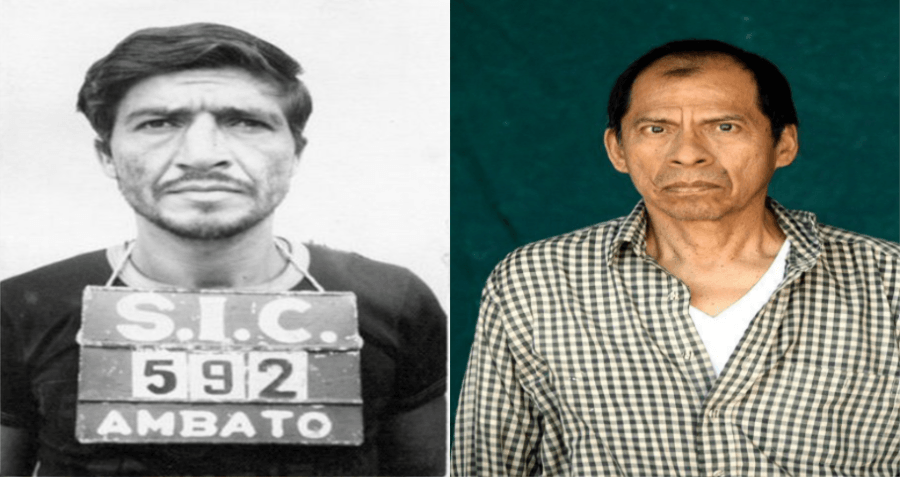
The murders followed a grim pattern: victims, often between 8 and 12 years old, were abducted, assaulted, and killed, usually in rural or impoverished areas. Local police initially dismissed many cases as disappearances until mass graves were uncovered in Ecuador. López was finally caught in 1980 when an attempted abduction failed and villagers detained him until police arrived.
In custody, López chillingly confessed to killing hundreds of girls. Authorities considered him credible after he led them to multiple gravesites. Convicted in Ecuador, he served just 14 years before being released in 1998, under the country’s maximum sentence laws at the time. Colombia later rearrested him but released him again. He vanished into obscurity shortly thereafter, sparking fears he may have resumed killing.
Many criminologists suspect López exaggerated his victim count, but evidence confirms he was one of history’s most prolific killers. Some investigators also believe he may not have acted alone, or that imitators took over after his arrest. To this day, his exact fate — and the true scale of his crimes — remains unknown, leaving South America haunted by the specter of unpunished evil.
NOTE: I have included López in this article because although he was actually caught intitally, he almost certainly continued to claim more victms after being released for which he has never been arrested.
3. CLEVELAND TORSO MURDERER — OHIO, USA (1930s)
From 1935 to 1938, Cleveland’s Kingsbury Run district became the hunting ground of an unidentified serial killer, later dubbed the “Torso Murderer” or “Mad Butcher.” At least 12 victims were discovered, though some estimates place the count closer to 20. The victims — often drifters, sex workers, or the homeless — were beheaded and dismembered, their remains scattered in ravines and dumps.
The killings began in September 1935 when two mutilated male torsos were found. Over the next three years, more body parts surfaced, often stripped of flesh or showing surgical precision. Police struggled to identify many victims, making the investigation even more difficult.
Cleveland’s safety director at the time was the famous crime-busting lawman Eliot Ness. He launched an aggressive campaign, even ordering the burning of shantytowns to flush out the killer. Despite several suspects, no charges ever stuck. The prime suspect was a doctor named Francis Sweeney, a cousin of a local congressman. He failed two lie-detector tests and was institutionalized, but Ness never had enough evidence to prosecute. Another suspect, Frank Dolezal, confessed under pressure but later recanted and died under mysterious circumstances in jail.
The murders suddenly ceased in 1938, though similar killings appeared elsewhere in the U.S., fueling speculation the killer may have moved on. Ness privately believed Sweeney was guilty, but the truth was never proven. The Torso Murderer vanished, leaving behind one of America’s most gruesome unsolved serial cases.
4. BIBLE JOHN — GLASGOW, SCOTLAND (1968–1969)
Between 1968 and 1969, three young women were murdered after attending the Barrowland Ballroom in Glasgow. The killer, dubbed “Bible John,” became one of Scotland’s most infamous unsolved murderers. Victims Patricia Docker, Jemima McDonald, and Helen Puttock were all last seen leaving the dance hall with a tall, well-dressed man who quoted scripture and condemned premarital sex — hence the nickname.
Docker was found strangled in 1968, her body dumped near her home. The following year, McDonald’s battered body was discovered in an abandoned building. In October 1969, Puttock was murdered after leaving the ballroom with her sister and a man later described in detail: red-haired, well-spoken, and fanatically religious.
Despite one of Scotland’s largest manhunts, police never identified the man. Theories have swirled for decades, including possible connections to serial killer Peter Tobin, who later murdered three women in England and was known to live in Glasgow at the time. Some investigators remain convinced Tobin was Bible John, while others argue the evidence is circumstantial.
The killings abruptly stopped after 1969, suggesting Bible John either left the area, was imprisoned for another crime, or died. To this day, the case remains unresolved, chilling in both its brutality and the pious eccentricity of the suspect. Glasgow remains haunted by the specter of the Bible-quoting stranger who slipped away into the night.
5. HINTERKAIFECK MURDERER — BAVARIA, GERMANY (1922)
On March 31, 1922, six members of the Gruber family were slaughtered at their isolated farmstead known as Hinterkaifeck. Victims included Andreas Gruber (63), his wife Cäzilia (72), their daughter Viktoria Gabriel (35), her children Cäzilia (7) and Josef (2), and the maid, Maria Baumgartner, who had only started working there that very day. The adults were bludgeoned to death with a mattock, while the children also perished violently.
What makes the case chilling is the evidence suggesting the killer may have lived in the farmhouse both before and after the murders. Days before the killings, footprints were seen leading from the woods to the farm but not back out. Strange noises were reported in the attic. After the murders, neighbors noticed smoke rising from the chimney, animals being fed, and the farm kept in eerie order for several days.
Investigators questioned numerous locals, including former lovers of Viktoria, family acquaintances, and vagrants. One prominent suspect was Lorenz Schlittenbauer, a neighbor rumored to be Josef’s biological father. Yet despite interrogations and theories of inheritance disputes or personal vengeance, no arrest was ever made.
The murders were so gruesome and baffling that the farm was eventually demolished. Even with modern forensic re-examinations of the skulls in the 1920s and 2000s, the mystery persists. The Hinterkaifeck killings remain Germany’s most infamous unsolved multiple homicide — a dark rural legend of a killer who vanished into the Bavarian woods.
6. AXEMAN OF NEW ORLEANS — LOUISIANA, USA (1918–1919)
From May 1918 to October 1919, New Orleans was terrorized by a mysterious intruder known as the Axeman. He typically broke into homes at night, attacking residents with their own axes or razors. At least six people were killed, though many more were injured. His targets were often Italian grocers and their families, fueling speculation about organized crime, racism, or personal vendettas.
The first recognized attack was the murder of Joseph and Catherine Maggio in May 1918, followed by a series of assaults across the city. Victims included families like the Andolinis, Cortimiglias, and Pepitones, all attacked while asleep. Survivors described a shadowy male figure, but details varied.
The Axeman’s notoriety peaked in March 1919 when a letter allegedly from him was published in the newspaper. In it, he claimed to be a “demon from hell” and declared that anyone playing jazz music loudly on the night of March 19 would be spared. That night, the city erupted in music, and no murders occurred.
Despite intense police work, no suspect was ever convicted. Some pointed to Mafia rivalries, others to a deranged loner. After October 1919, the attacks stopped as suddenly as they had begun.
The Axeman vanished into legend, remembered not only for his bloody crimes but also for the bizarre jazz ultimatum that turned the city into one big party. To this day, his identity is unknown, making him one of America’s most chilling unsolved killers.
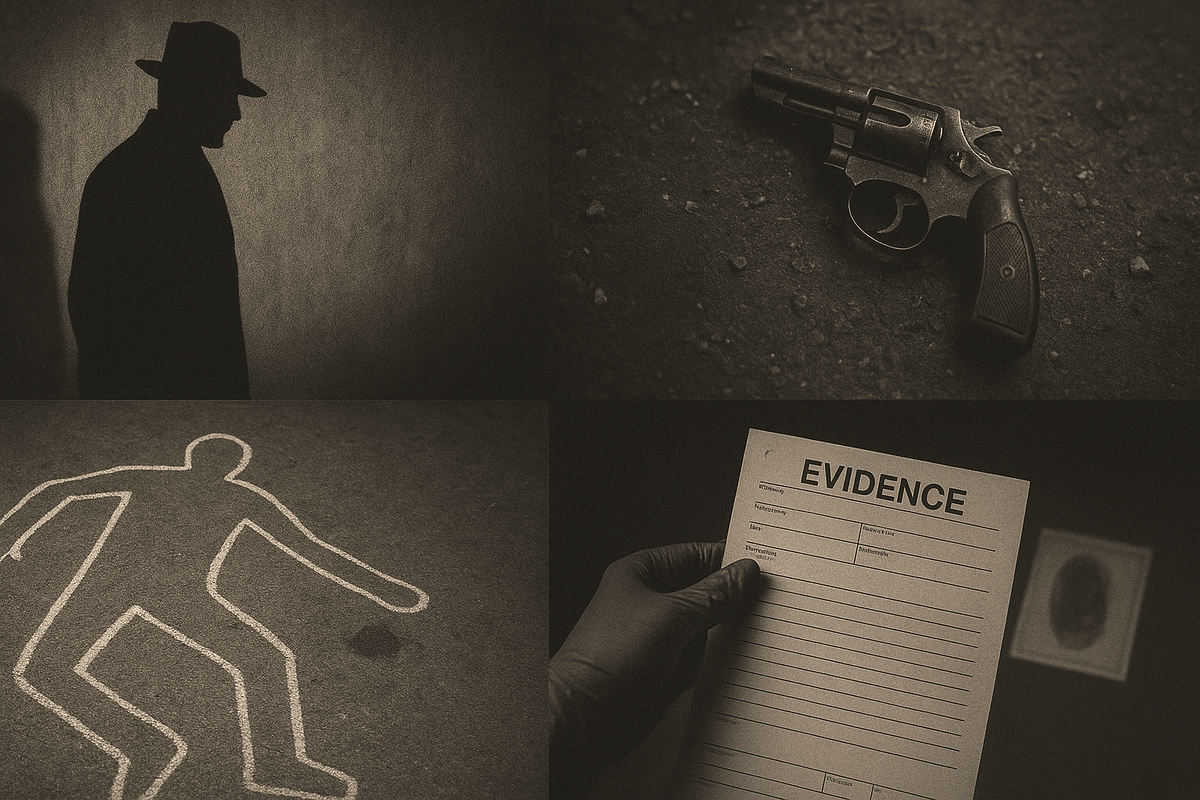
7. VILLISCA AXE MURDERER — IOWA, USA (1912)
On the night of June 9, 1912, eight people were brutally murdered in the small town of Villisca, Iowa. The victims included Josiah Moore, his wife Sarah, their four children, and two young overnight guests, Lena and Ina Stillinger. All were killed with an axe while they slept, most suffering blows to the head. Curtains were drawn, mirrors covered, and food half-eaten in the kitchen, suggesting the killer lingered in the house.
The next morning, neighbors discovered the horror, sparking one of America’s most infamous unsolved cases. The investigation identified numerous suspects. Reverend George Kelly, a traveling preacher, was the most prominent; he confessed to the murders but later recanted, and his trial ended in acquittal. Other suspects included Frank Jones, a local businessman and political rival of Josiah Moore, and Andy Sawyer, a transient with suspicious behavior. Yet none could be definitively tied to the crime.
The crime scene was heavily contaminated by townsfolk who entered before police secured the house, further complicating matters. Over the years, theories have ranged from a local vendetta to a traveling serial killer.
The case has remained officially unsolved for over a century. Today, the Villisca Axe Murder House is preserved as a grim museum and paranormal attraction. The massacre’s sheer brutality and the absence of resolution make it a haunting tale of a killer who disappeared into the night.
8. SERVANT GIRL ANNIHILATOR — AUSTIN, TEXAS, USA (1884–1885)
Between late 1884 and Christmas Eve 1885, Austin, Texas, was gripped by a series of vicious murders attributed to the so-called “Servant Girl Annihilator.” At least eight people — mostly African American servant women — were attacked in their homes at night. Victims were dragged into yards, bludgeoned with an axe or sharp object, and often sexually assaulted.
The first known attack occurred in December 1884, when Mollie Smith was murdered in her employer’s backyard. Over the following year, Clara Strand, Eliza Shelley, Irene Cross, Rebecca Ramey, and others were attacked or killed. On Christmas Eve 1885, two prominent white women, Susan Hancock and Eula Phillips, were murdered on the same night, escalating panic across the city.
The killings were brutal and bore similarities suggesting a single offender. Newspapers coined the lurid “Servant Girl Annihilator” moniker, and some modern writers even speculate the killer later traveled to London to become Jack the Ripper — though this remains conjecture.
Suspects included local politicians, drifters, and even a man named James Phillips, husband of victim Eula, but trials failed to convict anyone. Inconsistent witness accounts, racial prejudice, and lack of forensic science hindered the investigation.
After the last killings in December 1885, the attacks abruptly stopped. The Servant Girl Annihilator vanished without being identified, leaving Austin with one of America’s earliest serial-killer legends.
9. HIGHWAY OF TEARS KILLINGS — BRITISH COLUMBIA, CANADA (1970s–PRESENT)
Since the 1970s, a 450-mile stretch of remote highways in northern British Columbia has been the site of dozens of murders and disappearances of Indigenous women and girls. The area, now known as the “Highway of Tears,” encompasses Highways 16, 97, and 5. Victims were often hitchhiking due to lack of public transportation.
Estimates of the number of victims vary. The Royal Canadian Mounted Police officially recognize around 18 cases, but Indigenous groups say the true number exceeds 40. Victims include 12-year-old Monica Jack, last seen in 1978; 15-year-old Ramona Wilson, found murdered in 1995; and many others whose cases remain unsolved.
Investigations have been plagued by accusations of systemic racism and police indifference. Families of victims have long argued that authorities failed to act quickly or prioritize cases involving Indigenous women. While a few suspects have been linked to specific murders — such as serial killer Bobby Jack Fowler in the 1974 death of Colleen MacMillen — the majority of the crimes remain unsolved.
Most experts believe multiple killers are responsible. The remoteness of the highways, coupled with transient populations and lack of witnesses, has made solving the cases extremely difficult. Public inquiries have called for better transportation, victim support, and policing in the region.
The Highway of Tears remains a symbol of ongoing violence against Indigenous women in Canada — and of predators who may still be at large.
10. THE DOODLER — SAN FRANCISCO, USA (1974–1975)
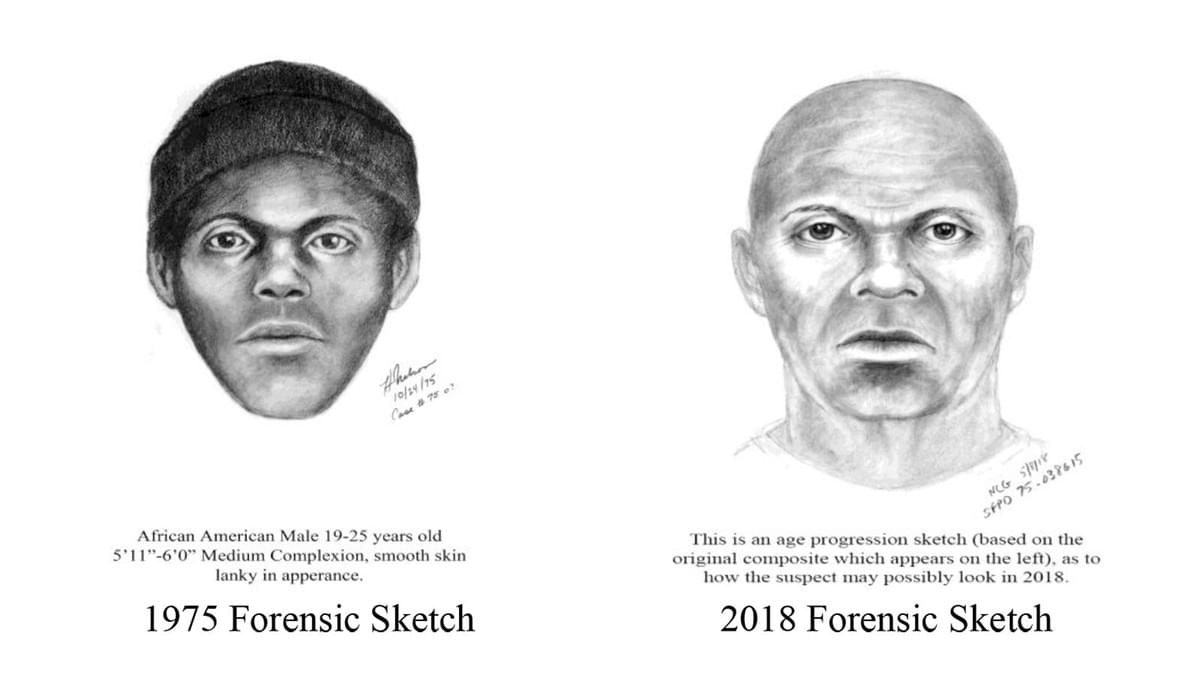
"The Doodler," a suspected serial killer who targeted gay men in San Francisco in the 1970s, is seen in composite sketches from 1975 and one from a few years ago, showing age progression. SFPD
In the mid-1970s, San Francisco’s gay community was targeted by a mysterious serial killer nicknamed “The Doodler.” He earned the moniker because he reportedly sketched portraits of men in bars and clubs before luring them away. At least 16 stabbings were attributed to him, with 14 survivors and 5 confirmed murders between January 1974 and September 1975.
Victims were typically gay men, found in parks, beaches, or apartments. The killings occurred during a time when homophobia was rampant, and many survivors refused to testify for fear of being outed. This reluctance hindered police efforts and allowed the killer to vanish.
Witnesses described the Doodler as a young Black man in his 20s, often well-dressed and soft-spoken. Police eventually identified a suspect and even questioned him extensively. However, without testimony from survivors, prosecutors could not bring charges. The suspect’s name was never publicly released, and he was quietly let go.
The murders suddenly stopped in late 1975, and the case went cold. In recent years, advances in DNA and renewed interest in cold cases have revived the investigation. Police have released age-progression sketches, believing the Doodler could still be alive.
Despite decades passing, no one has been charged. The Doodler remains one of San Francisco’s most disturbing cold cases — a killer who preyed on marginalized victims and disappeared into the shadows.
SERIAL KILLER MURDER MAP
UK EDITION - BOOK 1
Blog written by Guy Hadleigh, author of Crimes That Time Forgot, the Macabre True Crimes & Mysteries Series, the Murder and Mayhem Series, the British Killers Series, the Infamous True Crimes and Trials Series - and many more!


